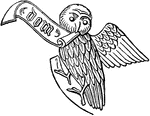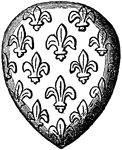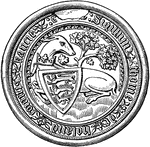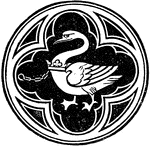
De Bohun Badge
"De Bohun badge. From the central spandrel of the Canopy of the Brass to Alianore de Bohun, Duchess…
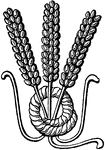
Badge of Abbot John de Wheathamstede
The heraldic badge of Abbot John de Wheathamstede. This badge has a rebus, or a visual pun representing…
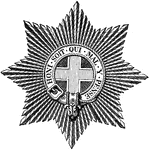
Star of the Order of the Garter
"The Star is the badge, first ordered by Charles I. The rays are of silver or diamonds. The star is…
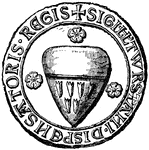
Seal of Thurstan
The heraldic seal of the archbishop of York, who worked under kings William II of England and Henry…
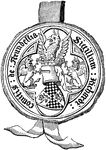
Seal of Richard, Earl of Arundel
"The Seal of Richard, Earl of Arundel, bears his achievement of arms. The supporters, crest, helm, etc.,…
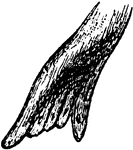
Foot of Seal
"Foot of the seal, which opens and closes in the act of natation, the organ being folded upon itself…

The Seal
"The seal, adapted principally for water. The extremities are larger than in the porpoise and manatee."—Pettigrew,…

The Turtle
"The turtle, adapted for swimming and diving, the extremities being relatively larger than in the seal,…
Lygodium Palmatum
The primary leafstalk of lygodium palmatum is very slender, about an eighth of an inch to a quarter…

Monument to the Baldwin Apple
Pictured is a monument to the Baldwin apple. The monument was erected in Wilmington, Massachusetts.…

Map of the Arnold Arboretum
A map of the Arnold Arboretum. The arboretum is located in Jamaica Plain, Massachusetts. It is a department…

Plan of Botanic Garden
Illustrated is the plan of a small botanic garden. This early plan is in Smith College, Northampton,…
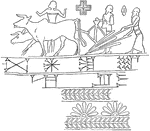
Babylonian Seal Impression
Pictured are men plowing a sowing. This illustration is from a Babylonian seal impression from the 14th…
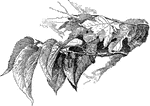
Native Red Mulberry
The leaves of the native red mulberry are very large. The fruit is deep red or almost black when fully…

Human Leg (Front View), and Comparative Diagrams showing Modifications of the Leg
This illustration shows a human leg (front view), and comparative diagrams showing modifications of…

Leg of Seal
This illustration shows the leg of a seal. P. Pelvis, FE. Femur, TI. Tibia, FI. Fibula, TA. Tarsus,…

Elephant Seal on a Rock
"The seal Macrorhinus elephantinus or proboscideus, or Morunga proboscidea. It is the largest of the…

Seal Swimming up to an Igloo
Illustration of the entrance of an igloo, built out of ice, partially underwater. A seal is swimming…

Leopard Seal
Leptonychotes weddelli. "A spotted seal of the southern and antarctic seas, belonging to the family…

Seal Press
"A press or stamp bearing dies on its jaws, or a die and a bed, for imprinting or embossing any device…

Skippet - Open Box with a Seal Inside
"A circular box used for covering and protecting a seal. Old documents were commonly sealed by means…
